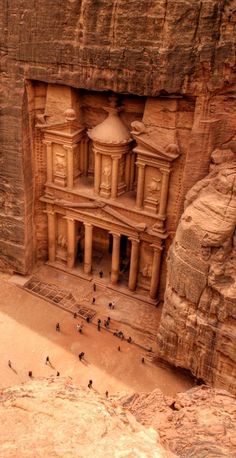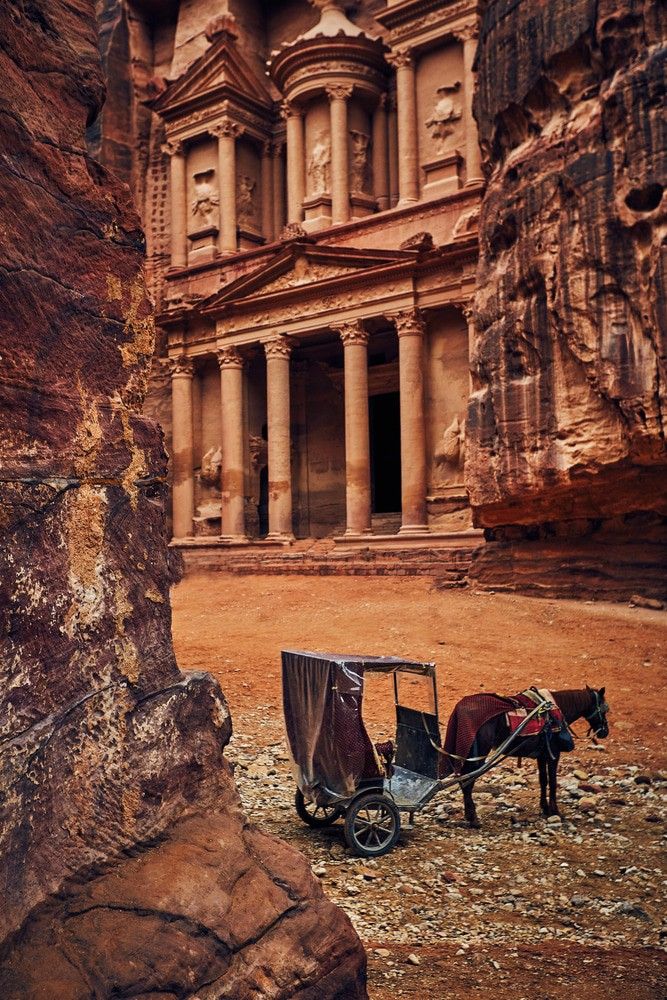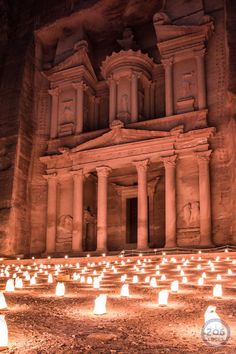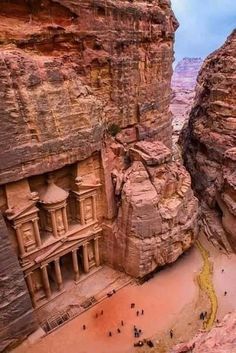
Nestled amidst the rugged desert landscape of Jordan lies a remarkable archaeological wonder, Petra. This ancient city, carved into the rose-red cliffs, is a testament to human ingenuity and a window into the rich history of the region. Known as the “Rose City,” Petra beckons travelers from around the world to witness its awe-inspiring beauty and unravel the mysteries of its past.

Dating back to the 6th century BCE, Petra was once the capital of the Nabatean Kingdom, a thriving trade hub that connected the Arabian Peninsula, Egypt, and the Levant. Its strategic location along ancient trade routes allowed it to flourish and amass great wealth. However, as the trade routes shifted and political dynamics changed, Petra gradually fell into obscurity and was abandoned by the 7th century CE.

For centuries, Petra remained hidden from the modern world, known only to local Bedouin tribes. It was rediscovered by Swiss explorer Johann Ludwig Burckhardt in 1812, captivating the imaginations of adventurers and historians alike. Today, Petra stands as a UNESCO World Heritage site and one of the New Seven Wonders of the World, attracting curious travelers eager to immerse themselves in its captivating allure.

Entering Petra through the narrow Siq, a dramatic gorge flanked by towering cliffs, is an experience that transports visitors to another era. As you venture deeper into the site, the Treasury (Al-Khazneh) reveals itself, an architectural masterpiece hewn into the rock face. The intricately carved facade, with its ornate columns and mythical figures, is a testament to the Nabatean craftsmanship and their blend of Hellenistic, Egyptian, and indigenous architectural styles.

Beyond the Treasury lies a vast expanse of archaeological wonders waiting to be explored. The Street of Facades, the Theater, the Royal Tombs, and the Monastery (Ad-Deir) are just a few of the breathtaking structures that dot the landscape. Each holds its own story, preserving the legacy of a bygone civilization.

One of the most remarkable aspects of Petra is its seamless integration with the natural environment. The ingenious Nabateans skillfully manipulated water resources, creating a sophisticated water management system that allowed life to flourish in this arid region. The presence of ancient dams, cisterns, and channels is a testament to their mastery of hydraulic engineering.

As you wander through the ancient streets and marvel at the architectural marvels, it’s easy to be captivated by the mystical atmosphere of Petra. The interplay of light and shadow on the sandstone cliffs, the vibrant hues that change with the shifting sun, and the silence that envelops the site all contribute to its ethereal charm.

Petra’s allure extends beyond its historical and archaeological significance. It has served as a backdrop for numerous films, including the iconic Indiana Jones movie “Indiana Jones and the Last Crusade.” Exploring the city’s hidden corners and uncovering its secrets evokes a sense of adventure and discovery, making it a favorite destination for movie enthusiasts and intrepid travelers alike.

For those seeking a deeper connection with Petra, engaging with the local Bedouin community is a must. The Bedouins, who have inhabited the area for generations, offer a glimpse into their traditional way of life and share their knowledge and stories passed down through the ages. Their hospitality and warmth create an enriching experience, adding a human touch to the ancient city’s grandeur.

Visiting Petra is a journey through time, an encounter with a civilization long gone, and a testament to the resilience of the human spirit. It is a place where history and nature intertwine, leaving visitors in awe of the extraordinary achievements of those who came before us. Exploring Petra



